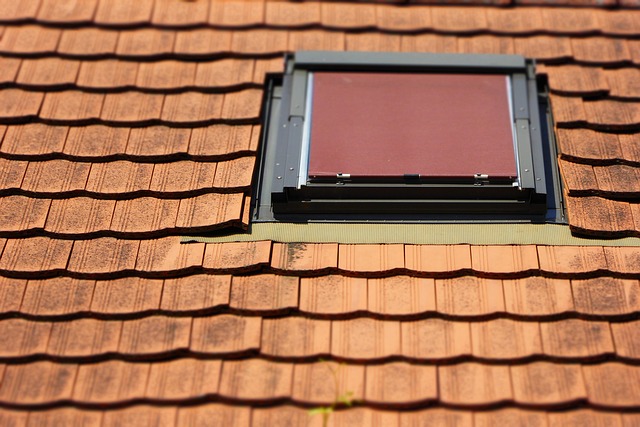Modern architecture craves curved rooflines for their dynamic appeal, enhancing structural aesthetics and creating striking visual focal points. Custom dormer designs are key to seamlessly integrating these curves while ensuring structural integrity. They offer a way to deviate from traditional shapes, adding unique silhouettes and aesthetic benefits. By combining custom dormers with arched roofs, architects can achieve contemporary, harmonious blends of sophistication and individuality.
Incorporating curved or arched rooflines is a modern aesthetic game-changer, transforming homes into architectural marvels. This article delves into the allure of contemporary design and explores how these dynamic shapes enhance visual appeal. We examine the role of curved and arched rooflines, highlighting their ability to create unique, captivating facades. Furthermore, we discuss custom dormer designs as a means to unlock creative potential while providing practical tips for implementation, ensuring both aesthetic excellence and structural integrity.
Understanding Modern Aesthetics and Its Appeal
In today’s architectural landscape, modern aesthetics have emerged as a defining feature, captivating folks with their clean lines and innovative forms. This design philosophy often emphasizes simplicity, functionality, and an organic connection to space. Incorporating curved or arched rooflines is a remarkable way to achieve this modern look, adding a touch of elegance and uniqueness to any structure. These fluid, dynamic shapes deviate from the conventional straight lines, offering a game-changer in visual appeal.
Custom dormer designs play a pivotal role here, as they provide the perfect canvas for crafting these curved elements. By integrating arched or curved rooflines, buildings can transform into striking visions of contemporary beauty. This approach not only enhances the overall aesthetic but also creates a sense of depth and movement, ensuring the structure stands out in a bustling architectural scene.
The Role of Curved and Arched Rooflines
Curved and arched rooflines have emerged as a powerful tool in modern architecture, offering a dynamic contrast to straight lines and right angles often associated with contemporary design. These organic forms bring a sense of fluidity and elegance to buildings, creating visually appealing silhouettes against the sky or landscape. In the pursuit of a modern aesthetic, architects and designers are increasingly incorporating custom dormer designs that incorporate these curved elements.
Custom dormers, with their tailored shapes and sizes, allow for the seamless integration of arched or curved rooflines. These dormers can be designed to enhance the overall structure, drawing attention to specific features or creating focal points. By combining custom dormer designs with curved roofs, buildings achieve a sophisticated and unique look that sets them apart in today’s architectural landscape.
Custom Dormer Designs: Unlocking Creativity
Curved or arched rooflines are a modern aesthetic trend, and one way to truly embrace this look is through custom dormer designs. Dormers, those small structures that project from the roof, can be transformed into eye-catching elements by incorporating non-traditional shapes. This design choice not only enhances the overall curb appeal but also adds a unique twist to what could otherwise be a conventional roofing feature.
Custom dormer designs offer architects and homeowners a canvas for creativity. Arched dormers can be designed to mimic natural forms, like waves or flowing lines, bringing a sense of fluidity to the building’s exterior. Alternatively, sharp curves can create dramatic statements, particularly when paired with modern architectural styles. These custom elements can also serve functional purposes, such as providing additional light and ventilation, while still maintaining an innovative and contemporary look.
Integrating Curves with Structural Considerations
When incorporating curved or arched rooflines for a modern aesthetic, it’s crucial to balance design with structural integrity. Custom dormer designs play a pivotal role in achieving this harmony. By integrating curves, architects can create visually stunning facades that differ from traditional rectangular lines. However, these organic shapes must be thoughtfully engineered to ensure structural stability and durability.
Dormers, for instance, are often tailored to accommodate curved roofs, providing both functional benefits and enhanced visual appeal. Custom dormer designs allow for the seamless transition of straight and curved elements, addressing potential load-bearing challenges that arise from non-linear rooflines. This meticulous approach ensures the building’s structural integrity while allowing designers to realise their vision for a unique, modern silhouette.
Practical Tips for Implementation and Inspiration
When incorporating curved or arched rooflines for a modern aesthetic, there are several practical tips to keep in mind. Start by considering your local building codes and architectural styles; some areas have strict guidelines on roof designs, while others encourage innovative custom dormer designs. Next, choose materials that complement the curve—metal roofing, for example, can add a sleek, contemporary look to arched roofs. Consider the structural integrity as well, ensuring proper engineering to support the unique shape.
For inspiration, look to renowned architects and design platforms showcasing modern homes with curved roofs. Pinterest and Instagram offer a wealth of visual inspiration, while architectural magazines like Dwell and Architectural Digest feature cutting-edge designs. Custom dormer designs incorporating arcs can range from subtle to dramatic, adding a distinctive touch that sets your home apart.
Incorporating curved or arched rooflines can significantly enhance a modern aesthetic, adding a touch of sophistication and unique design elements. By understanding the appeal of modern aesthetics and exploring the creative potential of custom dormer designs, homeowners and architects can navigate structural considerations while unlocking an array of visual possibilities. With practical tips and inspiring examples at hand, implementing these dynamic lines is more accessible than ever, allowing for truly remarkable architectural transformations.
